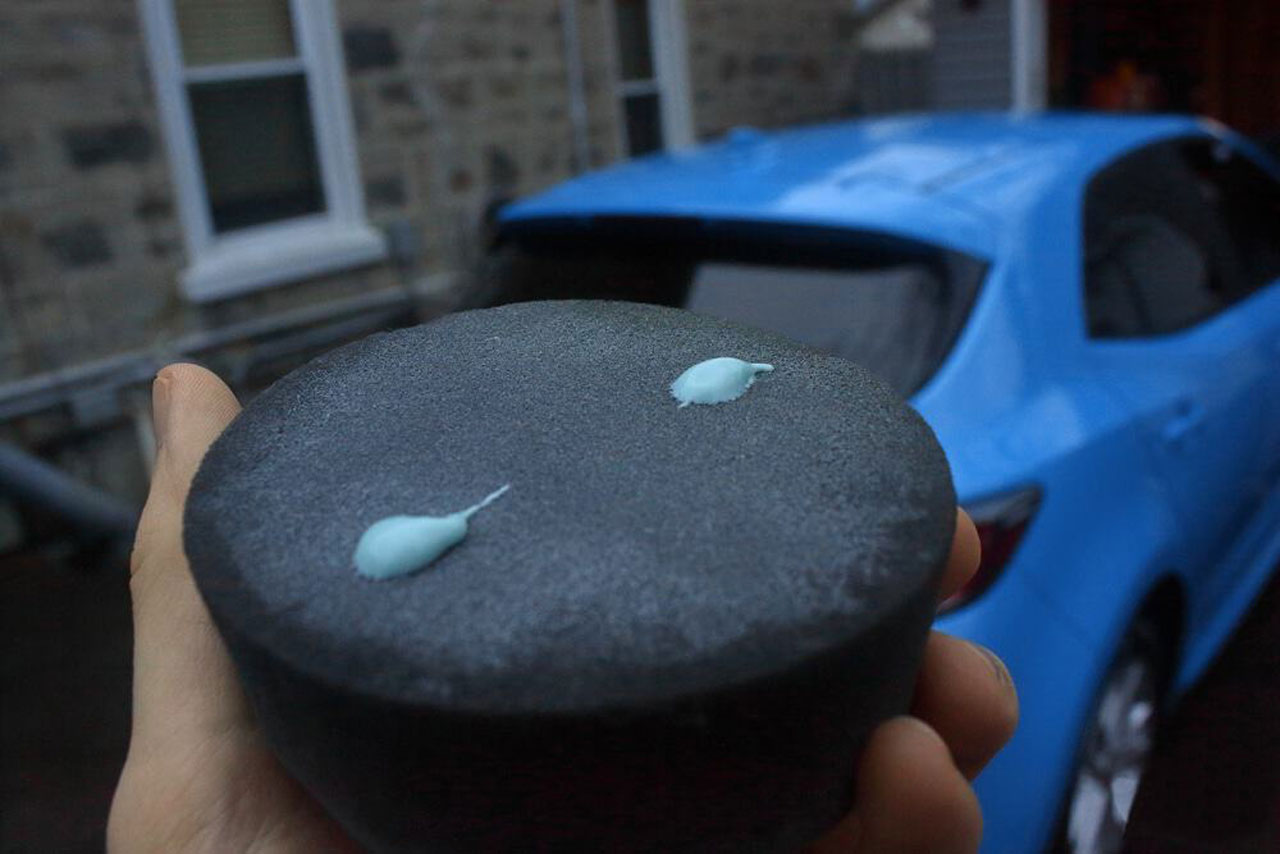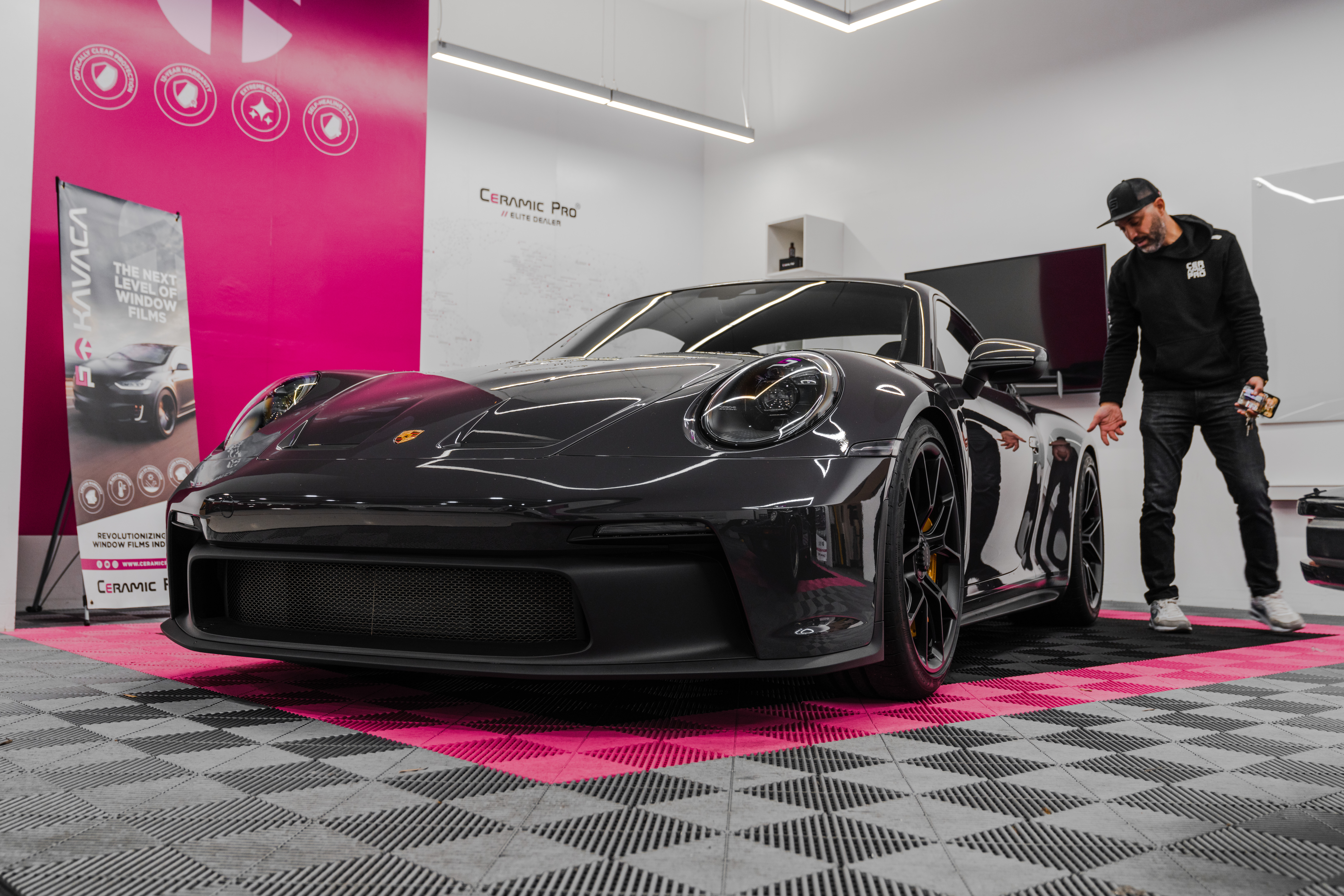The Top 6 Options for Car Owners in North America
When you search online for car paint protection products, you’ll find a lot of specific-targeted content. There are articles on car wax, blogs on ceramic coatings, and ‘independent reviews’ on PPF or the best category-specific products for keeping your ride clean and shiny. But did you ever notice that there really isn’t much online about all the car paint protection options available today?
The paint protection world is huge – like multiple billions of dollars spent per year large. In fact, the global car care industry is on a rapid climb – approaching more than $5 billion sold online alone. The primary reason for this is that today’s automotive consumer is becoming more aware of the potential contaminants and elements that cause damage to their vehicle’s appearance. As such, they want to protect their car’s paintwork from road debris and other contaminants.
They also know how a damaged paint job can negatively impact their vehicle’s value. Regardless of the reasons, the fact remains that you’ve got multiple options to keep your car’s paint protected. And that’s what we’ll explore today.
In the blog below, we’ll provide an overview of the top six solutions for protective paint on cars. We will explain what they are, how they work, and some pros and cons of each. If you want to learn more about each type of product, we’ll provide a link to an in-depth blog about that specific paint protection solution.
So – let’s get cracking.
The Truth About Car Wax
The entry point and most historic paint protection product for cars is traditional car wax. The original sacrificial layer of protection for car paint was introduced to the consumer market in the 1950’s with the introduction of natural carnauba wax in a paste form.
Car waxes were initially only offered at service stations (you see – in the old days there were gas stations that also checked your oil, detailed, and cleaned your cars, even provided mechanic services and repairs). Today, the mobile or professional detailer use synthetic or lab-created liquid car waxes or traditional carnauba wax to apply on top of car paint. You can also apply car wax yourself.
What Does Car Wax Do?
Car wax is designed to bond on TOP of the clear coat of paint. It is applied by hand in most cases, in a circular pattern, where the wax will initially dry, leaving a powdery or cloudy substance that has to be removed or ‘buffed’ off. Once the residual has been removed, the wax will harden and create a temporary shield of protection.
Depending on the type of car wax, it can last anywhere from a few weeks to up to six months. Some synthetic waxes that are infused with SiO2 or “ceramic” products can extend the life expectancy up to a year in some cases.
Pros of Using Car Wax
- It’s the entry point of car paint protection.
- Reduced cost for the wax and supplies.
- Fairly simple to apply.
- Blocks UV rays from causing oxidation on car paint.
- Can restore clear coat shine.
Cons of Using Car Wax
- Not a long-lasting option.
- Must be removed before applying a new coating.
- Does not provide good hydrophobic properties (exception being ceramic car wax).
- Time-consuming project – that will add up in costs with every application (especially if you have a mobile detailer come to your location every few months).
The Truth About Paint Sealants
If you’re looking for a longer-lasting and better paint protection solution for your daily driver, the paint sealant is the next logical step. This is a lab-created or synthetic wax that is typically in liquid form. It’s applied in a similar fashion to traditional car wax but will hold up from 6 to 12 months.

The main difference between car wax and a paint sealant is in manufacturing. Paint sealants are always synthetic in nature, while many car waxes are natural.
Paint sealants are basically accelerated and longer-lasting car waxes – with the main difference being the synthetic ingredients that simply hold up against exposure for extended periods. However, it does not penetrate minor imperfections in porous surfaces, so it only sits on top of the car’s paint.
What Does a Paint Sealant Do?
Like its name suggests, a paint sealant is engineered to provide a protective seal from contaminants like road grime, bird droppings, bug splatters, tree sap, pollen, and salt. These toxins can start to breakdown clear coats, car paint, and eventually lead to oxidation and corrosion – which creates rust.
Paint sealants and car wax are best on clear coats of paint – and don’t protect or bond on top of plastic trim, chrome, and other materials very well. They can be used on top of a ceramic coating, vinyl wrap, or paint protection film as a protective layer, but that takes away many of the ancillary benefits of these products – especially ceramic coatings.
Pros of Using Paint Sealants
- They last longer than car wax
- A better PROTECTIVE product than car wax
- Easier to apply than some paste wax formula
Cons of Using Paint Sealants
- Does not improve shine or luster of paint
- More expensive than natural car wax
- Harder to remove than natural car wax
- Not great at reducing water spots
- Must be removed before applying a new coat
The Truth About Ceramic Spray Coatings
The next evolution of paint protection comes in the form of hybrid spray coatings. This product category is saturated with many different grades and types of formulations, that quite frankly tend to be more hype than hope for genuine paint protection.
The main product attribute these solutions provide is replicating some of the positive qualities of ceramic coatings – mainly improved hydrophobic properties. This is the water beading or slippery surface that you see in most advertising and marketing of these products. However, they’re not exceptional at providing actual protection.
There are several blends and formulas for spray on coatings including:
Teflon or Silicone-Based Sprays: Most of these spray on coatings are infused with polymer sealant materials and Teflon or silicone-based ingredients. This is what classifies the sprays as being “ceramic” – and why they can (and will) use this in all product marketing. They mainly provide a layer on top of the factory paint, but do not penetrate or fill porous imperfections.
Hybrid Silicone and Wax Sprays: The next evolution is the hybrid – or blending multiple ingredients to provide enhanced hydrophobic and shine properties – while improving protection. The hydrophobic properties are produced by the “ceramic” ingredients, while the protection is delivered by the synthetic wax.
SiO2 Boost Sprays: The final and most expensive of the boost sprays is the SiO2 infused spray. This is where nano-technology is infused with the spray coating, which will start to penetrate those tiny imperfections found in all porous materials. This can be used on glass, paint, plastic trims, headlight covers, and even wheels.
The best spray coatings will hold up for about six months but can be layered on top of each coat. This means you don’t need to remove them prior to application. However, it’s recommended to apply these coatings on freshly cleaned or prepped paint. It’s not intended to cover scratches and will actually enhance them.
Pros of Using Spray Coatings
- Most are easy to apply
- An affordable coating
- Can be layered on top of each coat
- Improved shine and hydrophobic properties
Cons of Using Spray Coatings
- Multiple formulations – can be confusing to find the right one for your needs
- Can’t be applied outside (direct sunlight is a killer)
- Several different grades and application methods (make sure to follow the recommended steps)
- Can leave high spots and cloudy residue if not buffed off as recommended
The Truth About Nano Ceramic Coatings
The spray coating is a diluted version of the nano ceramic coating that gained in popularity when Ceramic Pro (that’s us) introduced the professional-grade coating for cars about 10 years ago. This is a highly concentrated solution that blends SiO2 (silicon dioxide), TiO2 (titanium dioxide), and carrier solvents.
The exact formulation for each coating is a closely guarded secret. Within the overall segment of nano ceramic coatings are two grades:
DIY Nano Ceramic Coatings
The do-it-yourself version of ceramic coatings is designed for improved or easier application by the average auto enthusiast. This is accomplished by removing the percentage of carrier solvents, which is the ‘secret sauce’ that allows a professional grade coating to be layered on top of each application. DIY coatings can’t be layered – so applying multiple coats is basically just wasting your money and time.
The average DIY nano coating will hold up for about 18 months – with some claiming to last for a few years. At the time of this blog, there was only (1) that offered any warranty – and that’s a two year ‘expected longevity’ guarantee.
Professional Grade Nano Ceramic Coatings
The originators of the ceramic coating segment are the professional grade. These products are made for specific substrates or materials including:
- Automotive clear coats
- Windows and windshields
- Wheels
- Plastics and Textiles
- Interior – Leather and Cloth
- Marine and Industrial Applications
The professional grade coating is a genuine protective shield – that blocks 100% of UV exposure, reduces light scratching, provides superior hydrophobic properties, and lowers the potential of sticky items like animal waste, tree sap, bug splatter, and pollen from sticking to the surface. It will also amplify the tone and depth of your paint – whether you have a gloss or matte finish.

Here is an easy to understand rating chart that compares the most common paint protection products for cars. You can clearly see how effective Ceramic Pro 9H protects the vehicle.
Pros of a Professional Nano Ceramic Coating
- Applied and prepped by experts in a controlled environment
- Comes with a warranty – from two years to a lifetime of protection
- Can be layered multiple times – for superior protection and longevity
- A package option to fit any budget or desired protection level
- Easier to complete routine car wash service
- Customized formulations for specific materials – outside and inside your vehicle
- Increases vehicle trade in value
- Installation is documented on Carfax vehicle history report
Cons of a Professional Nano Ceramic Coating
- Not the cheapest paint protection solution
- Needs to be inspected once per year by the installation center
Graphene Ceramic Coatings
The new kid on the paint protection block is marketed as the end-all-to-be-all solution for vehicle coatings. It’s known as a graphene ceramic coating. For those not familiar with these super products (and I’m being sarcastic if you didn’t notice), graphene coatings are essentially DIY nano ceramic coatings, with TINY amounts of a material called graphene.
So – what’s graphene you ask? Simply put – it’s the strongest, thinnest material in the world (that’s not sarcastic – that’s legit). It’s a one-atom thick, two-dimensional sheet of carbon that’s packed into a microscopic honeycomb lattice (kind of like carbon fiber). It’s derived from graphite but goes through a conversion process to create an amazing substance that has applications in aerospace, automotive, industrial, and medical industries.
That’s the core substance – graphene. The problem with a graphene coating is not formulated with pure graphene. It’s derived from graphene oxide – which is a “reduction of graphene oxide by thermal, chemical or electrical treatments.” In layman’s terms, reduced graphene oxide does not maintain that perfect atomic structure as genuine graphene.
Here is a genuine example of this. Depending on the company promoting it, the formulation ranges from microscopic levels of this super substance (which is what is needed to provide protection), or – it contains 10% of graphene, or 20% of this stuff. However, is a ceramic coating was infused with pure graphene, it would only require less than 1% of this super substance. While many paint protection companies advertise (microscopic levels of graphene) – it’s graphene oxide that is infused in the coating.
And that’s the main issue with these products – the lack of understanding how it works – and how much is needed to provide paint protection. Many companies claim up to 7 years of protection – but they don’t offer a warranty or guarantee to back those claims. Makes you kind of wonder – huh?
While there is a ton of potential – the jury is still out on how effective the product is with protecting your vehicle’s paintwork.
The Truth About Paint Protection Film
The highest PROVEN paint protection solution is paint protection film. You might know this product under its popular name of clear bra. However, the clear bra is simply a type of paint protective film application.
It basically covers the high-exposed area of your car’s exterior like the bumper, front grille, headlight covers, front of the hood, and turn signals. It pretty much eliminates swirl marks, maintains a high gloss finish (if you have a gloss paint) and protects that factory clear coat.
PPF or paint protection film is a incredibly strong, durable, and revolutionary product that was initially created by 3M to provide protection for helicopter blades during the Vietnam War. Eventually the formulation was fine-tuned for automotive applications.

Kavaca Paint Protection Film is installed by certified auto salons and car detailing experts – only. This ensures a precision fit, longer lasting durability, and is backed with a warranty.
Paint protection film has self-healing abilities, meaning that if it’s scratched, a detailer can repair it with direct application of heat. However, a new instant healing PPF called Kavaca has been launched by Ceramic Pro that uses nanotechnology to heal scratches as soon as they occur.
Pros for Using Car Paint Protection Film
- It offers true paint protection – by blocking rock chips, and damage due to light debris strikes
- It exceptionally durable – lasting for five years or more in some cases
- Is applied by auto detailing experts and is backed by warranties for longevity and performance
- Can be combined with a nano ceramic coating – for a lifetime worth of protection
- Is available in a gloss or matte finish – well, Kavaca offers this at least. It also protects the painted surface from stone chips, bug splatter, and other damaging contaminants.
Cons of Using Paint Protection Film
- It can be pricy. But, new car paint protection film offer the highest level of protection possible.
- ….and that’s about it. PPF is arguably the best car paint protection product made today.
What’s the Verdict on Car Paint Protection Options?
As you can see – there are several products you can choose to protect your vehicle from damage. While ceramic paint protection and PPF are the two clear-cut and proven winners, it’s not perfect for all car owners.
The key to making the right choice for a protective coating is being able to collect all the right information, speak with a professional auto salon that offers all of these services, and pick the paint finish protective products that fits your individual needs, budget, and protection goals.
One of the best resources available to any car owner are the professional auto salons who sell and install Ceramic Pro 9H and Kavaca Paint Protection Film. These hardworking men and women have been specially trained in all paint correction and protection techniques and can provide factual information about each type of paint protection product. They can also repair most paint damage, to ensure you have an optimal surface.
The fact they offer multiple automotive protection solutions means they won’t be bias to one particular product – so you can have peace of mind knowing you’re getting the facts – not fiction. If you’d like to connect with a professional car detailer near you, or receive a free estimate for paint protection products, simply click the button below.





